5 Tips On Incorporating Kid-Friendly Interior Design Into Your Home
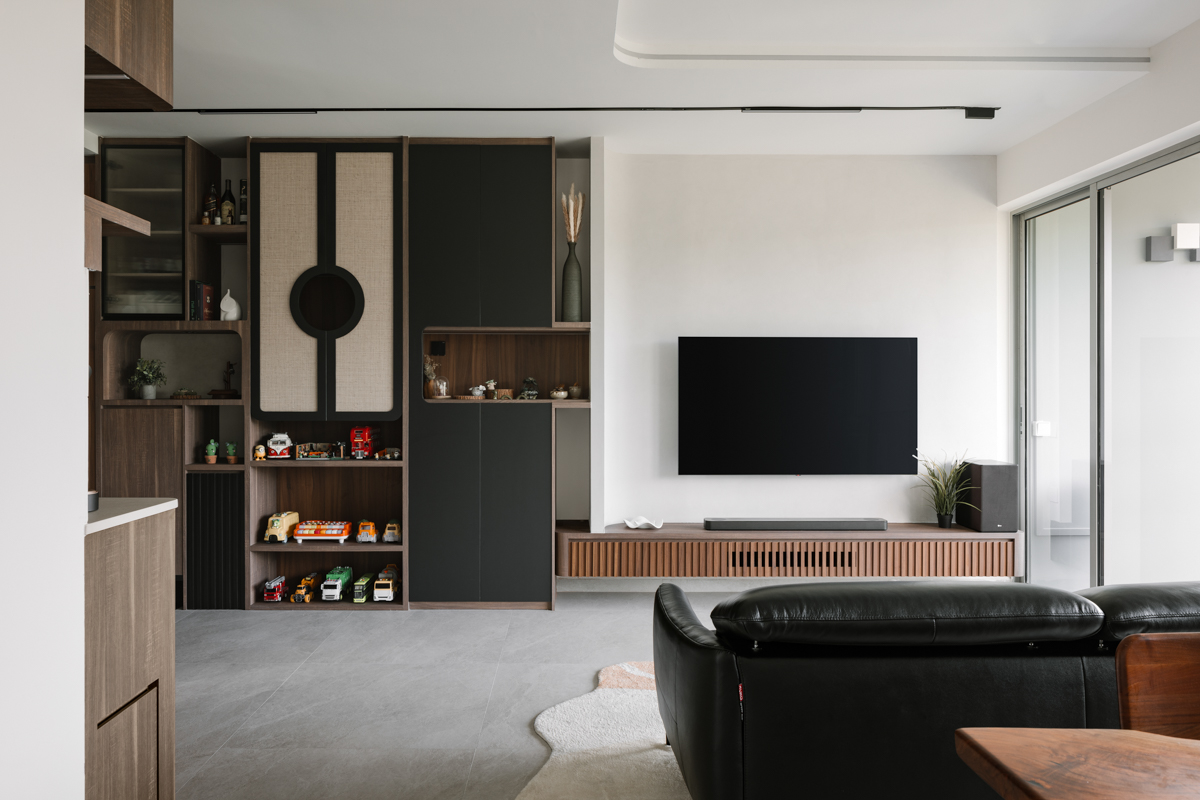
Designing a home with a kid-friendly interior design in mind can be challenging for families. Safety, durability and practicality are certainly at the forefront, but balancing that with the aesthetics of the home may be a feat for many. A well-designed kid-friendly interior goes beyond adding child-sized furniture and playpen to the home. Rather, it requires careful consideration of materials, built-in items and loose furnishing to craft a space that works for the whole family.
Let us guide you through 5 important points to consider when designing your very own child-friendly home interior.
1. Prioritise Safety
Safety first is what we often hear, and this is especially important for parents with a newborn child or young children. The home interior should be designed in such a way that it is a safe environment for children to have free play without constant supervision from adults. As young children are prone to falling down or running into things while playing, one way to reduce risk of injuries would be to add curves to built-in carpentry and select furniture with rounded edges. Even better would be to select cushioned or padded furniture over those with hard frames or sharp edges. For example, picking a sofa with a padded frame, an ottoman or beanbags, over wood or metal framed sofas and armchairs.

If you plan to choose loose carpentry items over built-in ones, it would be best to secure large items like bookshelves, cabinets or wardrobes to the wall. This will prevent them from tipping over when children pull or knock into them, which can reduce the likelihood of injuries arising.
In the bathroom and other wet zones, consider using tiles that have higher slip resistance. This will lower the risk of falling in wet areas. Non-slip pads can also be added under rugs and floor mats to prevent falls.
2. Select Durable And Easy-To-Maintain Materials
We’d say kid-friendly, but perhaps “kid-resistant” would be more appropriate when it comes to designing your home. Spills, stains and scuffs are inevitable in a home with young children, and it is important to select materials that can withstand such wear and tear. Using washable paint for the walls of your home is one solution. It allows you to wipe away stains easily without having to repaint your walls. On carpentry, consider using laminates that can double as a whiteboard, to give your child a usable canvas to expand their creativity.

When it comes to furniture, opting for stain-resistant fabrics for upholstery is a smart choice for a kid-friendly home. These fabrics repel spills and prevent stains from setting in, making it easier to keep your furniture looking pristine. You can also consider purchasing sofas, armchairs or even dining chairs with removable covers that are machine-washable. By prioritising durable and easy-to-maintain materials, you can craft a home that is both beautiful and resilient, capable of withstanding the challenges of family life in Singapore.
3. Create Functional Spaces
A home should be designed for all of its inhabitants, and functionality is one of the key aspects to consider when crafting a home’s interior for both children and adults alike. Incorporating closed storage solutions such as cabinets, storage benches or even platforms and window seats, are one way to keep clutter out of sight. You can consider having low shelves or cabinets to store your child’s toys and belongings. This makes it easily accessible to the child and can foster independence and responsibility for tidying their own things.
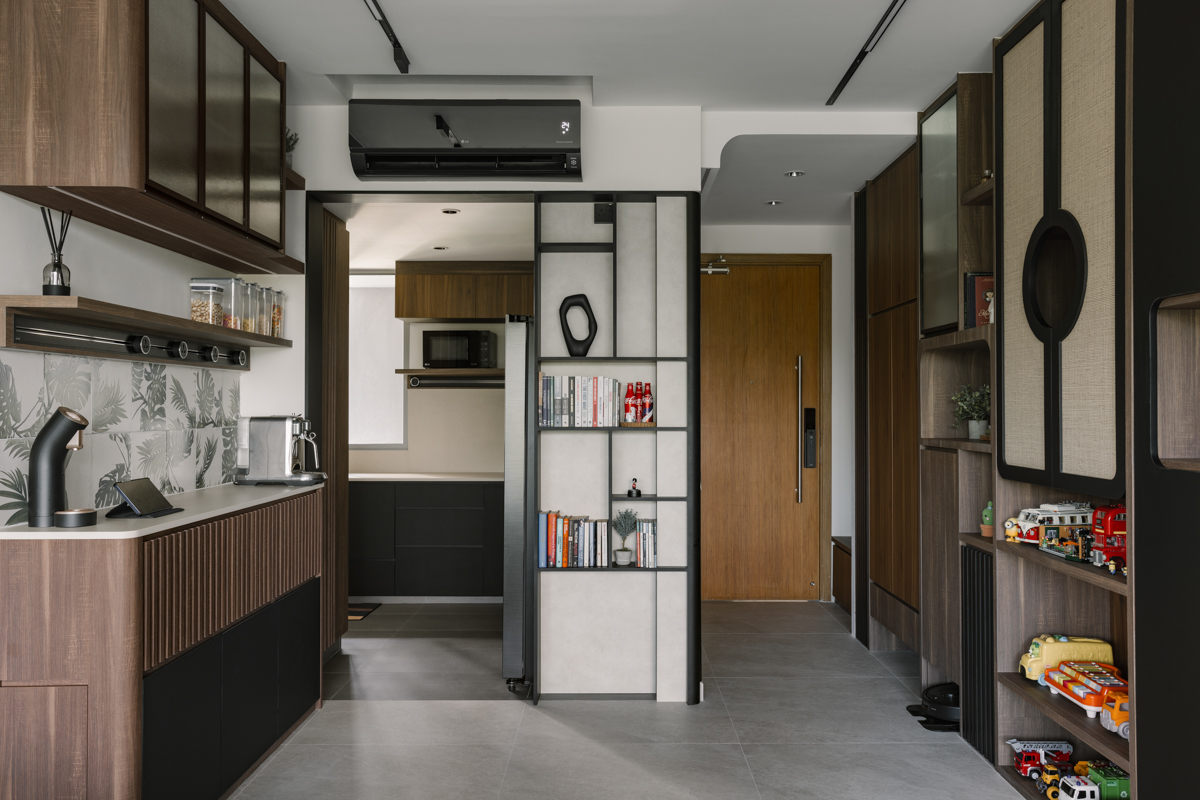
Convertible or extendable furniture are also a good choice for growing families. One example would be extendable dining tables and benches that can accommodate guests or larger families when extended, and take up less space in small homes when not in use. In families where both parents are working and grandparents or a helper assists with caring for the children, Murphy beds or sofa beds are an option in homes with space constraints. This enables the space to be used for other activities in the day, while converting into a comfortable sleep area at night. By incorporating multi-functional and convertible furniture, you can create versatile, practical spaces that enhance your family’s daily life and adapt to your changing needs over time.
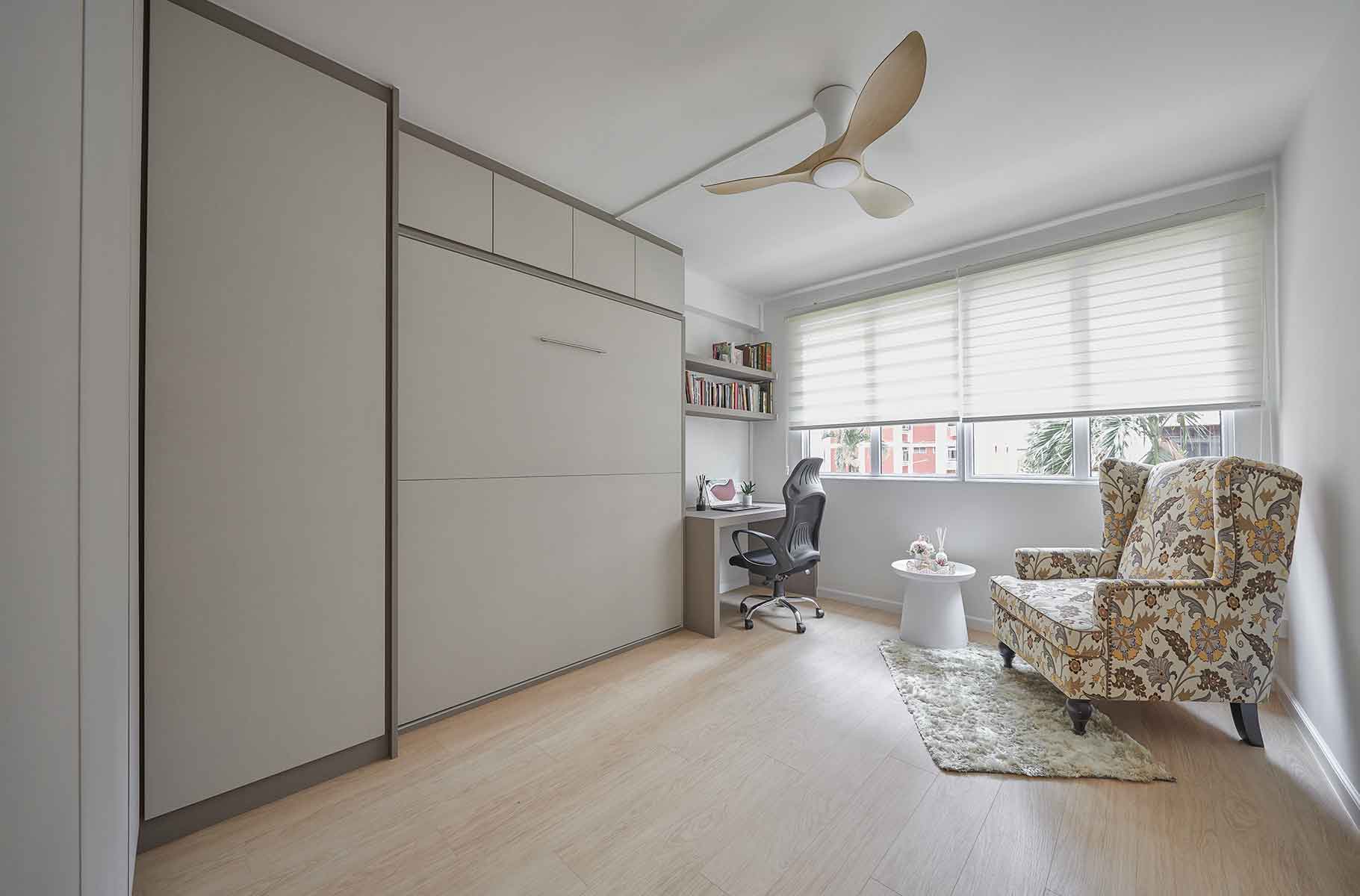
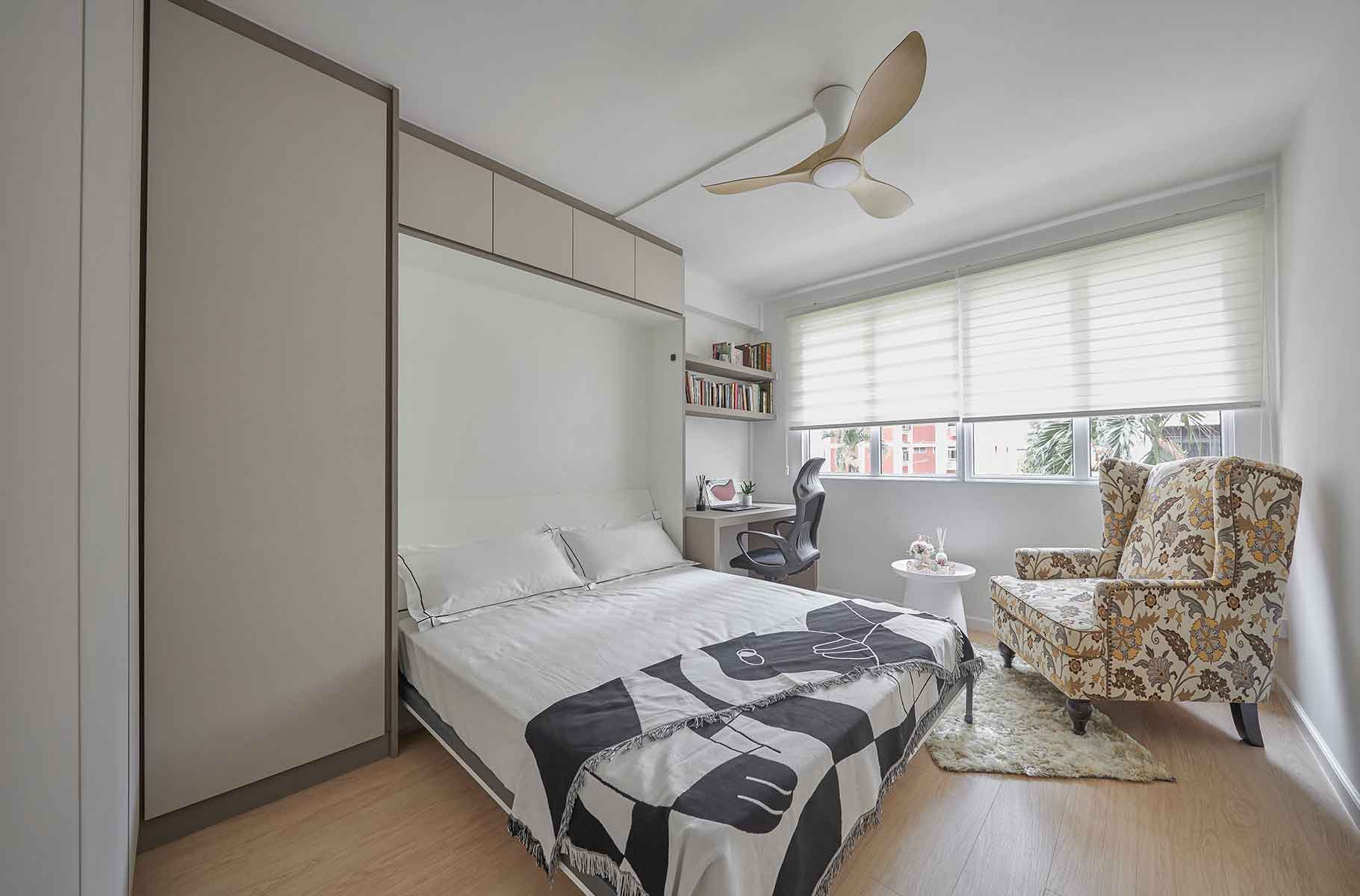
4. Encourage Creativity
Creativity is crucial in a child’s development, and a kid-friendly interior would be the best way to foster that creativity. Consider setting up designated areas that inspire and nurture creativity through free play or hobby development. Some examples would be setting up an art corner with child-sized tables and chairs along with art supplies, or a mini library with beanbags and books. The homeowners of this maisonette took advantage of the space under their staircase to build a small hideout for their young children to play and read.
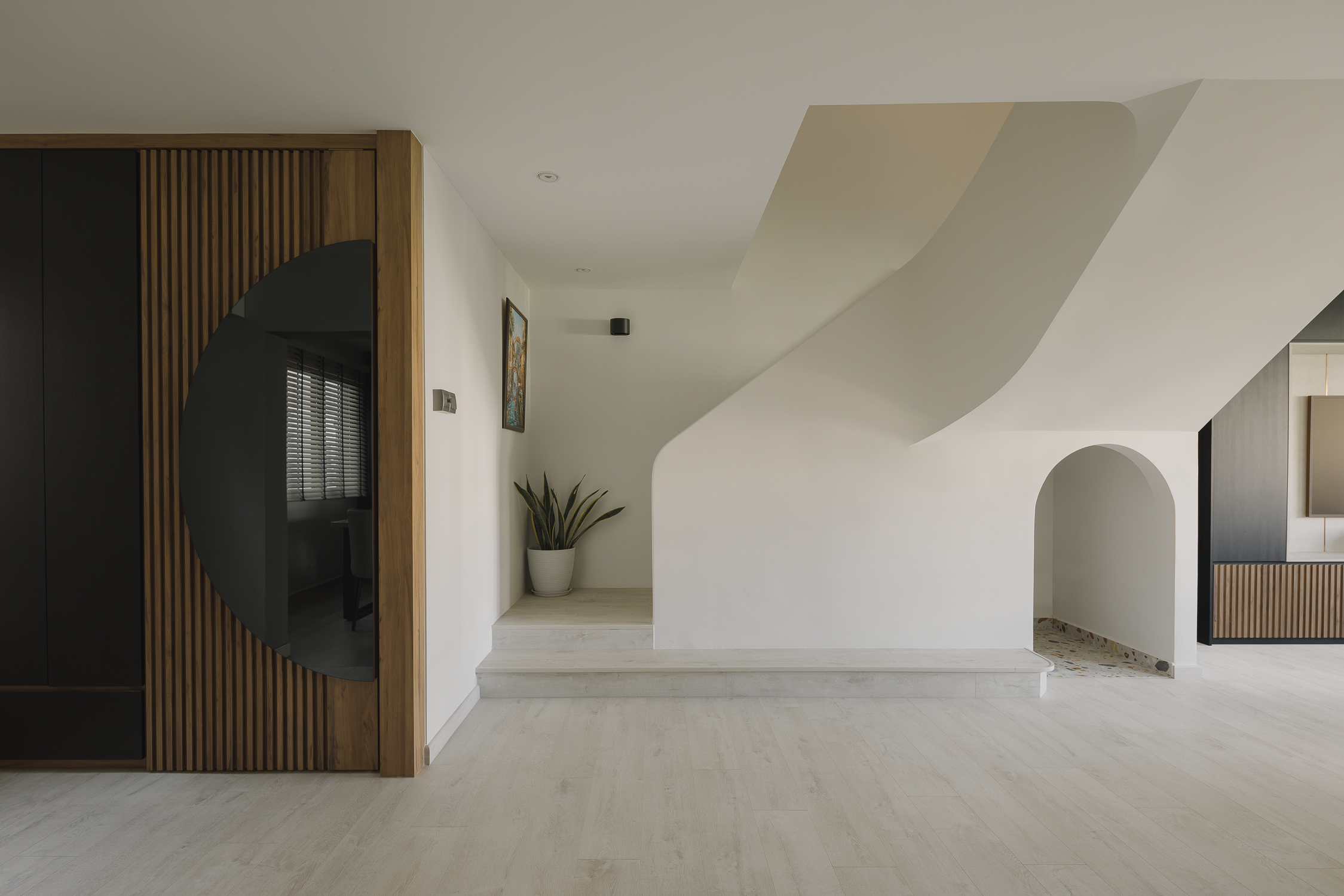
If space constraints are a concern to designating an art corner, interactive walls are another way to foster creativity. Whiteboard paint or chalkboard paint are options to consider, allowing for an expansive canvas for children to draw and write on that can be reused over and over again. The impermanance of it also would allow for any mess to be erased whenever a clean, pristine wall is desired.
5. Incorporate Fun Elements
Fun elements can come in many forms in a kid-friendly interior, and one of the easiest ways would be through bright and cheerful colours. Be it wall paint, wallpaper, or even tiles and laminates, colours can be incorporated not just in your child’s bedroom and bathroom, but throughout the home as well. If you prefer a less permanent addition of colours to your home, you can opt for coloured or patterned rugs, cushions or even homeware to add playful touches to your home. These vibrant additions can instantly brighten up a room and create a more dynamic and stimulating environment for your children.
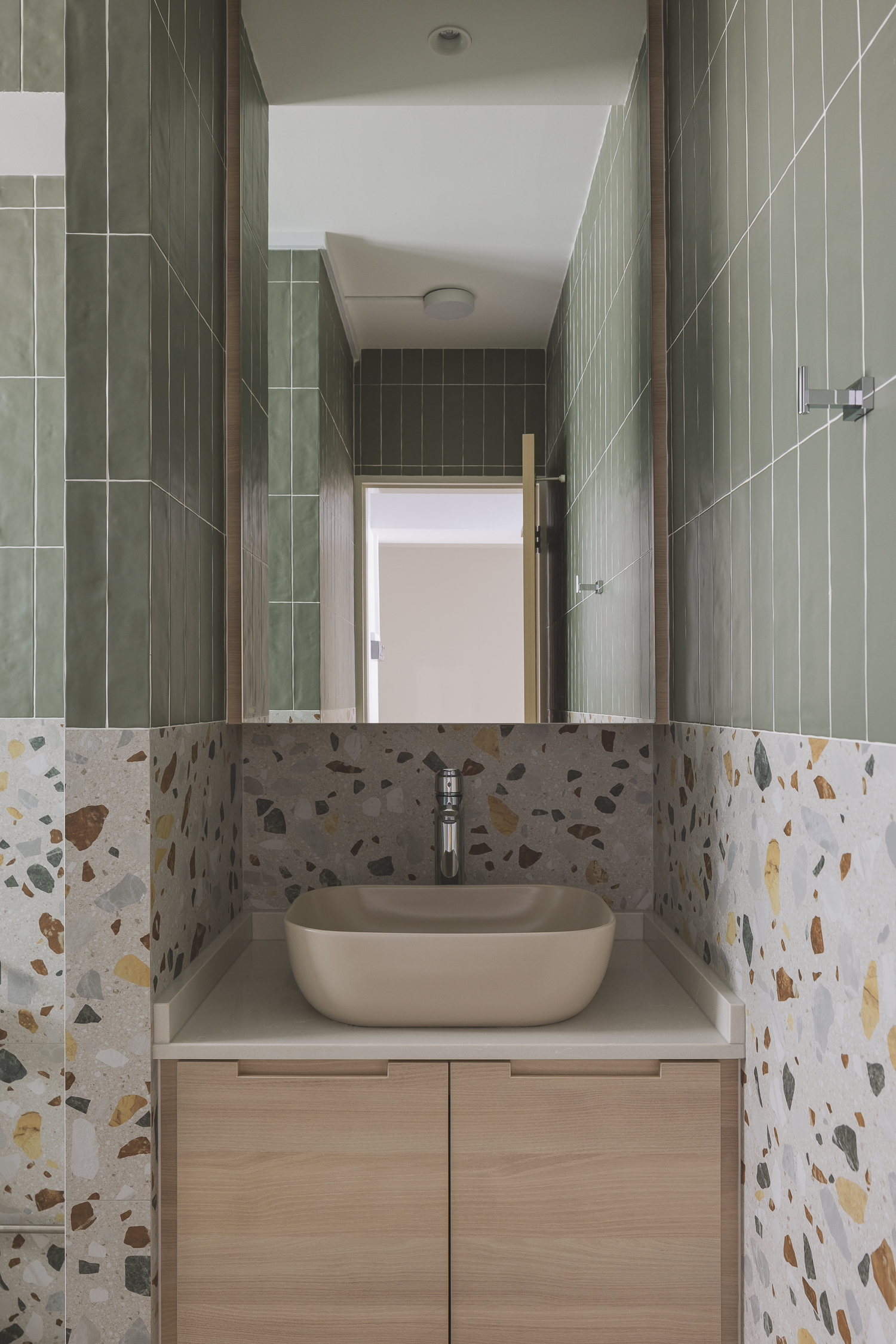
Thinking about styling a bedroom for your child? Themed rooms are an amazing way to engage your child through their interests and hobbies. Consider murals or wallpaper, a themed bed and decor items to bring the space to life. If budget is a cause for concern, then decals, bedding and plush toys are an alternative to decorate a child’s bedroom. By thoughtfully integrating such fun elements into your home, you create a fun and inspiring environment where your children can thrive, learn and play.
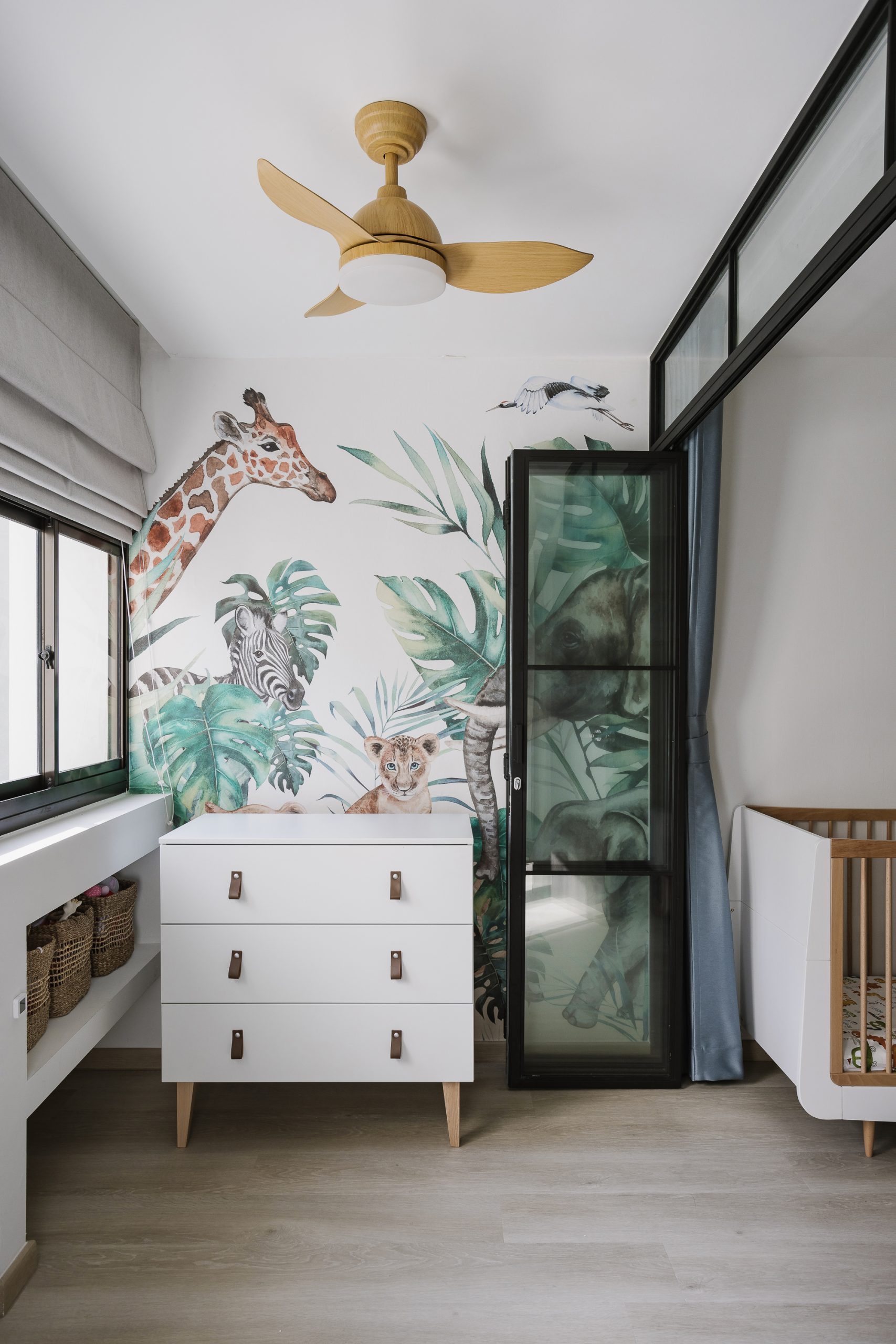
Creating a kid-friendly home doesn’t mean sacrificing style. With thoughtful design choices, you can create a space that is both beautiful and functional for your whole family. You can share your needs and concerns with your interior designer and have them guide you through the planning and building of a home that best fits you and your family.
CONSULT OUR DESIGNER
-
30 December 2025 DESIGN INSPIRATIONHOME TOUR
A Look Inside Our 2025 Homes
-
24 December 2025 TIPS & GUIDES
5 Little-Known Condo Interior Design Hacks for Kitchens in Singapore
-
24 December 2025 TIPS & GUIDES
7 HDB Interior Designs in Singapore According to Your Personality Type
-
24 December 2025 TIPS & GUIDES
Luxury Interior Design Singapore: The 2026 Palettes, Textures, & Forms You’ll See
-
24 December 2025 TIPS & GUIDES
Scandinavian Interior Designs Don’t Have to Be Pale: How to Embrace Colour the Right Way
-
16 December 2025 DESIGN INSPIRATIONPRE-RENOVATIONTIPS & GUIDES
Low-Maintenance Interior Design Ideas For Busy Singaporeans

